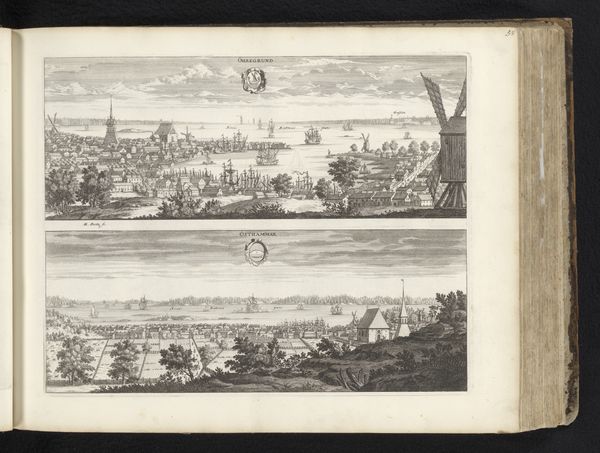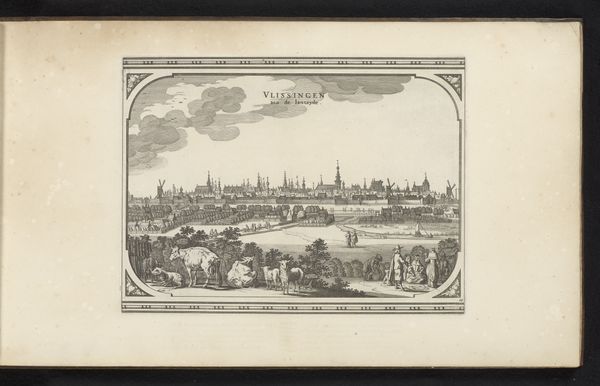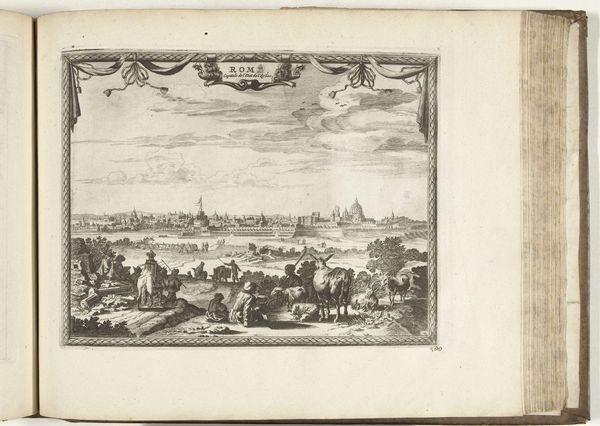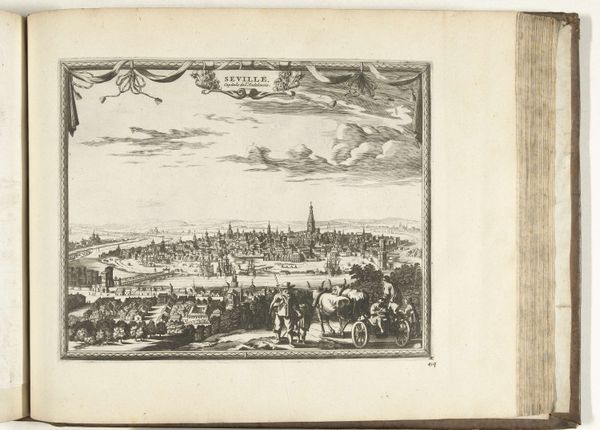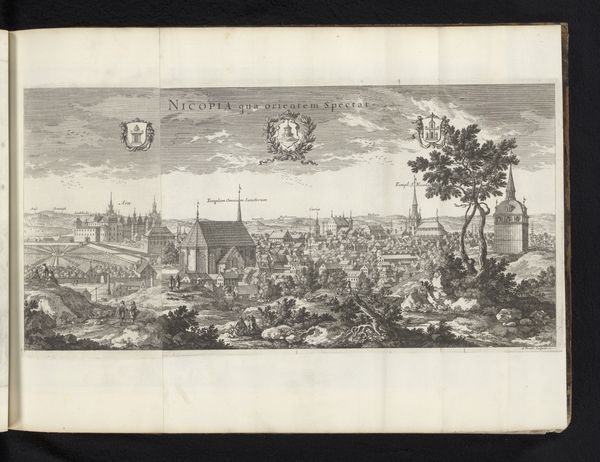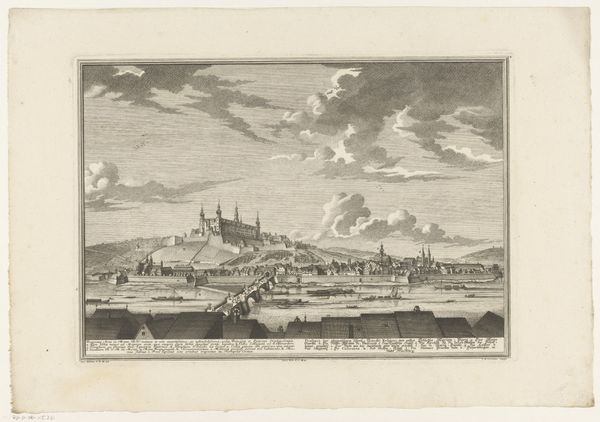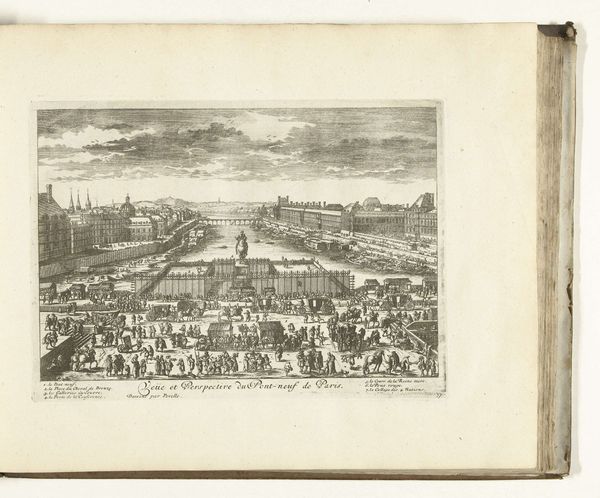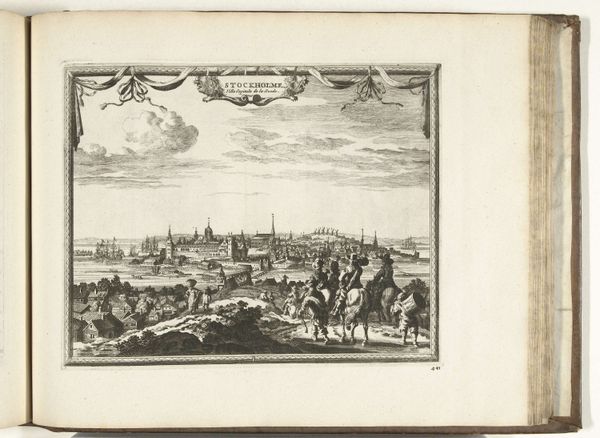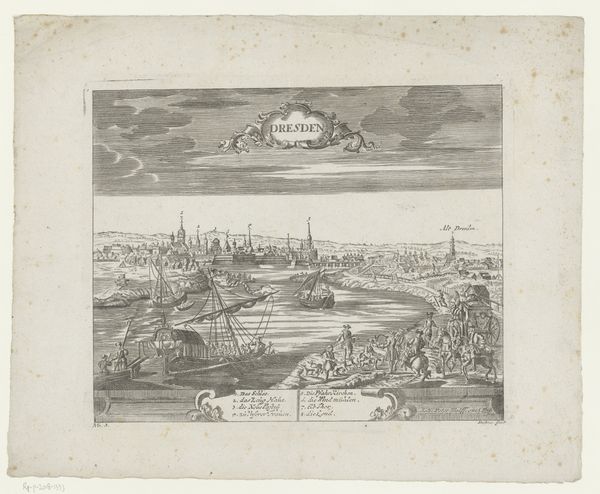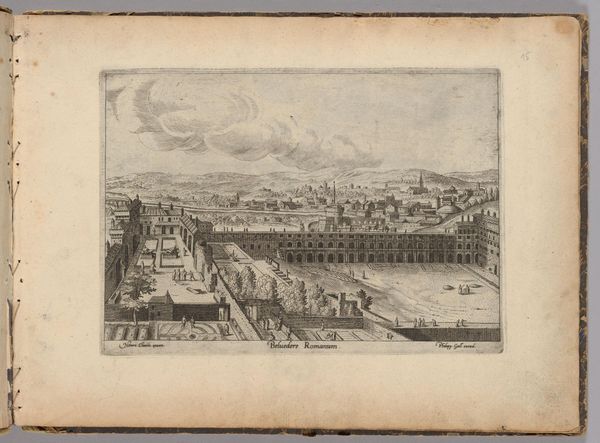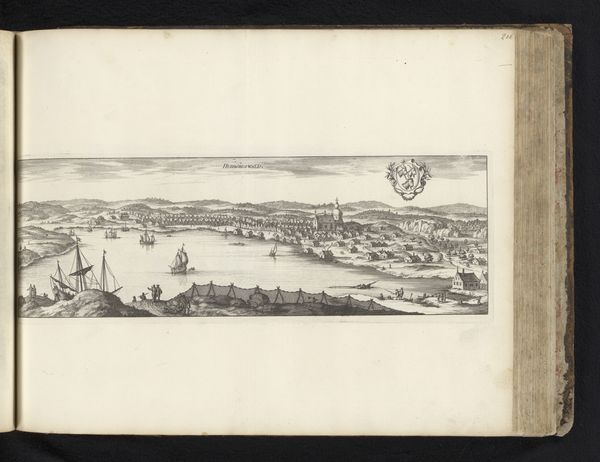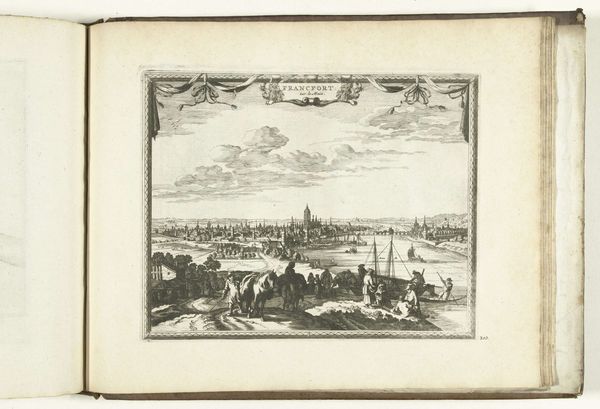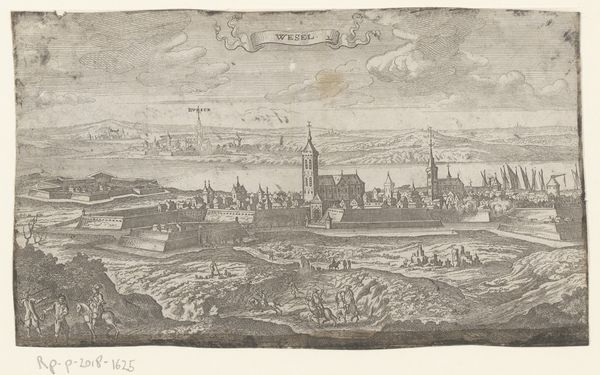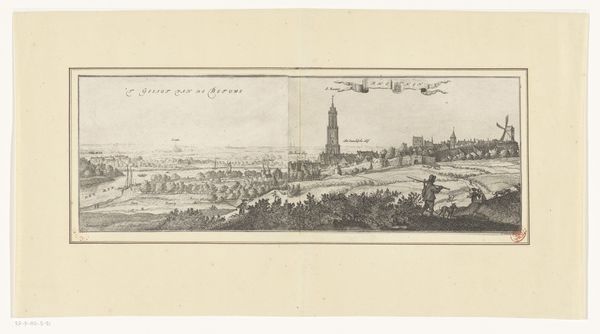
print, engraving
#
baroque
# print
#
landscape
#
cityscape
#
engraving
Dimensions: height 254 mm, width 380 mm
Copyright: Rijks Museum: Open Domain
Curator: Immediately, I notice a rather somber atmosphere despite it being a cityscape, rendered meticulously in grayscale. What details stand out for you? Editor: This engraving, entitled "Gezicht op Falun en Hedemora," made by Erik Reitz in 1696, displays an interesting perspective. It showcases the cities of Falun and Hedemora in Sweden. My immediate focus is drawn to the lines themselves, I'm thinking about the labour intensive nature of printmaking at this time. The incising into the metal, the act of printing. It's hard to reconcile the clean image with such manual processes. Curator: An excellent observation. I am quite compelled by the artist's use of light and shadow to articulate the form of the buildings and terrain. Note the meticulous detailing of the architecture—spires, roofs, and windows all contribute to a complex interplay of textures. Editor: And what’s fascinating is considering this print's place within 17th-century Swedish society. Was this for the elite, commissioned to showcase developing urban centers? Or was this type of image being circulated more widely as part of trade and consumption practices? Curator: Indeed, the formal arrangement within this print— the contrast of light and dark areas, and the balanced composition— invite contemplation of structure in art as sign. For example, the way each scene employs depth. Look how the details near the horizon fade almost to nothing in service of the picture plane's depth and verisimilitude. Editor: To your point about composition and form: while I admire Reitz’s meticulous technique in rendering architecture and perspective, I am still grounded in the question of who was purchasing this. Printmaking allowed the production of multiple copies – each one requiring the application of material to a surface in the physical world. What's depicted and for whom? Those are connected! Curator: An essential consideration indeed. But for me, beyond social function, there is an internal elegance to Reitz's artistry that beckons towards a universal artistic appreciation, separate from those practical considerations. It seems to stand apart. Editor: Perhaps, but for me, even the most formally elegant piece carries with it the imprint of its production. To ignore the socioeconomic underpinnings feels akin to viewing art through a veil of abstraction. Still, "Gezicht op Falun en Hedemora," a beautiful testament to both aesthetic sensibilities and the modes of production. Curator: A lovely and necessary challenge to my formalist perspective. A fitting conclusion that emphasizes that any piece is incomplete without a consideration of these processes.
Comments
No comments
Be the first to comment and join the conversation on the ultimate creative platform.
